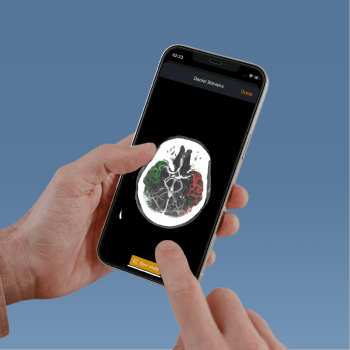MR CLEAN-LATE phase 3 trial shows positive results
Ischemic stroke is a serious medical condition that can lead to disability and death if not treated promptly. Endovascular treatment (EVT) has been proven effective in patients with anterior circulation ischemic stroke within a 6-hour window, and in the late window (6-24 hours in patients with excellent CTP profiles). However, its efficacy and safety in patients beyond this have not been well studied.
Recently in the Netherlands, the MR CLEAN-LATE phase 3 trial (multicenter, open-label, blinded-endpoint, randomized and controlled) was conducted to assess the efficacy and safety of EVT in late-window ischemic stroke patients, selected on the basis of collateral status.
Here we summarize the results of the study (published on The Lancet) and its implications for clinical practice.
Understanding the role of collateral flow in EVT
The MR CLEAN-LATE study included 535 patients (18 years or older) with acute ischemic stroke, who presented in the late window with an anterior circulation large-vessel occlusion and collateral flow on CT angiography (CTA), and a neurological deficit score of at least 2 on the National Institutes of Health Stroke Scale (NIHSS) – patients who were eligible for late-window EVT based on their CTP-profile were treated according to national guidelines and excluded from MR CLEAN-LATE enrollment.
The researchers observed that the median modified Rankin Scale (mRS) score at 90 days was lower in the EVT group than in the control group and that there was a shift towards better outcomes on the mRS for the EVT group.
All-cause mortality did not differ significantly between groups, but symptomatic intracranial hemorrhage occurred more often in the EVT group than in the control group.
Expanding the treatment window for ischemic stroke patients
The MR CLEAN-LATE study provides evidence that EVT is effective and safe for late-window acute ischemic stroke patients with good collateral flow profiles on CTA.
The study results indicate that the selection of patients for EVT in the late window could be primarily based on the presence of collateral flow.
Patient selection for EVT in the late window can be based primarily on the presence of collateral flow.
This finding has important implications for clinical practice as it further expands the treatment window for acute ischemic stroke patients, improving their outcomes. It also allows for EVT eligibility determination in centers that do not use CTP routinely.
It should be noted that the study had limitations, particularly the per-protocol exclusion of patients with excellent CTP profiles.
StrokeViewer’s collateral algorithm
Thanks to our Collateral algorithm, StrokeViewer is able to make a collateral assessment, providing the physicians with an automated collateral score (given as a percentage).
The visualization of the vessels, combined with the thrombus location, helps determine whether the ischemic stroke patient will benefit from endovascular therapy.

